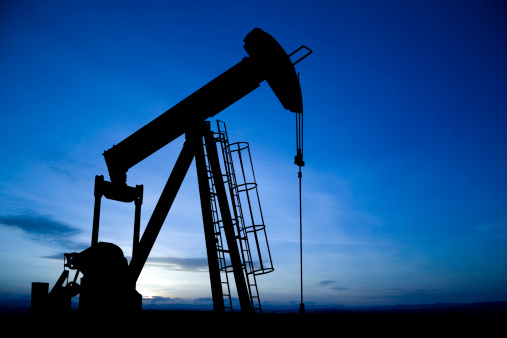
The fifth anniversary of the Deepwater Horizon disaster is approaching, but in the intervening years since the well blowout deep offshore, oil and gas drillers have pushed even deeper and even farther afield.
Oil exploration companies are hitting the pause button in 2015 due to the bust in prices and the supply glut, and may not take on massive new projects. But over the long-term, in order to boost flagging production, the oil majors’ directive is pretty clear. A lot of the “giant” oil fields are mature and declining while fewer and fewer are being discovered each year to replace depleting output. As easy oil runs out, drillers are forced to look in difficult places for new sources of oil.
Read more: Three Triggers That Will Send Oil Crashing Again
Here’s a look at several of the most challenging oil projects currently underway around the world.
Kearl Oil Sands
One of the largest and most expensive oil sands projects, Kearl has been a logistical challenge to say the least. It holds an estimated 4.6 billion barrels of oil. The open-pit mining operation is supposed to produce 345,000 barrels per day, but has experienced equipment malfunctions and setbacks, and production has run well low of what Imperial Oil, the project’s lead operator, had planned. The facility had to be temporarily shut down in late 2014 because of failed equipment. To build the operation, equipment had to be shipped from Asia to the United States, and then broken up so that they could be transported on highways through Montana and Idaho. The equipment then had to be broken up into even smaller loads because of public opposition to the convoys of trucks moving through those states. Delays and cost overruns have bedeviled Imperial, but it is pushing on with an expansion of Kearl, despite low oil prices. The project has now cost more than $20 billion.
Read more: The $6.8 Billion Great Wall Of Japan: Fukushima Cleanup Takes On Epic Proportion
Ichthys
Located 220 kilometers off of Western Australia, Ichthys is “effectively three mega-projects rolled into one,” says Inpex, the Japanese oil company heading up the project. It involves offshore drilling for natural gas, processing onboard ships located at the sea surface, and liquefaction onshore for LNG export. The project will cost $34 billion and involves the longest natural gas export pipeline in the southern hemisphere. Scheduled to begin in 2016, the Ichthys will allow for the export of 8.4 million tons of LNG each year, which could account for nearly 15 percent of Australia’s LNG export capacity.
Stones
Royal Dutch Shell is in the midst of developing the deepest offshore oil field in the world, not too far away from the Macondo well in the Gulf of Mexico. Located 9,500 feet below the sea surface – or around twice as deep as the Macondo well – Shell’s “Stones” project will target the lower tertiary, one of the last frontiers in oil exploration. The lower tertiary is a geological formation that is ultra-deep, and its oil reservoirs tend to be mixed with sand and located beneath thick layers of salt. Shell will build subsea production facilities that tie back to a floating production, storage, and offloading (FPSO) vessel, Shell’s first in the Gulf of Mexico.
Read more: Low Prices Help Arctic Avoid A ‘Gold Rush’ Scenario
Kashagan
The massive oil and gas field in the Caspian Sea has become the most expensive oil project in the world and is perhaps the most technically daunting. Originally discovered in 2000, the project was billed as the largest oil discovery in decades. It is the fifth largest field in the world by reserves, and the largest outside of the Middle East. Despite the alluring bounty, the project has turned into a nightmare for the consortium of companies involved, which includes Eni, ExxonMobil, Royal Dutch Shell, Total, and the Kazakh government-owned oil company. Dubbed by The Economist as “cash all gone,” Kashagan has been plagued with delays, cost overruns, and engineering difficulties. The consortium has had to build artificial islands, work through winter ice conditions, and drill at great depths and pressure. An official with the consortium has called Kashagan “one of the largest and most complex industrial projects currently being developed anywhere in the world.”
But perhaps the most challenging is the “sourness” of the gas the companies are pulling out of the seabed. Production finally began in 2013, after an eight-year delay. However, just a few weeks later, operations were quickly shut down because the pipelines suffered from leaks. The problem is toxic hydrogen sulfide gas, which is corroding the pipelines. Fixing the pipes could tack on an additional $3.6 billion (or more) to the project, with production not set to resume until 2017. All told, the project will cost well north of $50 billion, with some estimates pegging the cost at nearly double that amount.
This article originally appeared on Oilprice.com.
More from Oilprice.com:
More Must-Reads from TIME
- Donald Trump Is TIME's 2024 Person of the Year
- Why We Chose Trump as Person of the Year
- Is Intermittent Fasting Good or Bad for You?
- The 100 Must-Read Books of 2024
- The 20 Best Christmas TV Episodes
- Column: If Optimism Feels Ridiculous Now, Try Hope
- The Future of Climate Action Is Trade Policy
- Merle Bombardieri Is Helping People Make the Baby Decision
Contact us at letters@time.com